100 East Proposal Triggers Questions on New TIF Guidelines
Council gets in the weeds on deal to redevelop state's third tallest building.
The subject at hand was a subsidy to facilitate the office-to-residential conversion of the downtown 100 East tower, but Monday’s Zoning, Neighborhoods & Development Committee meeting ended up going far beyond this. It turned into a session of council members questioning the city’s new tax incremental financing (TIF) guidelines.
Conversion of the mostly vacant 35-story tower into Wisconsin’s tallest residential building is slated to be the first project to go through the Department of City Development‘s new TIF guidelines that were introduced in April.
The aging office building would be redeveloped into 373 apartments. In exchange for the city granting the $165 million development a $14.4 million subsidy, the development team would be required to set aside 75 units at rates targeted at 30% of a household’s income for households making no more than 100% of the Milwaukee County median income, approximately $77,000 for a single person.
But committee members had plenty of questions about various facets of the arrangement and how it would impact future deals.
The policy questions, many of which were asked by Alderwoman Milele A. Coggs, started with why the city would use a countywide median income instead of a citywide figure.
DCD redevelopment and special projects director Larry Kilmer, who was hired as the guidelines were already being developed, said he suspected it was to keep the program in line with other funding programs. The low-income housing tax credit program relies on countywide figures maintained by the U.S. Department of Housing and Urban Development (HUD).
“This is us making up our own program,” said Coggs. She said using city, rather than county figures, would likely lower the income level and therefore yield lower rents.
Johnny Vassallo, a member of the development team, said using the county figures made it easier to use the HUD loan guarantee program the development team is seeking. The application period, he said, is two years long. “The HUD deal is essentially done if we get this deal done,” said Vassallo.
Coggs also asked about clawback provisions. She indicated she would like to see a way for the city to profit if the development is sold within a short period.
Vassallo and partner Joe Klein said the city would benefit, and that adding a restriction on a sale would make it hard to raise private financing. Klein said selling the building for a premium would boost the assessment, generating more tax revenue and paying back the subsidy faster.
“We enriched you guys, so we would be getting it from the next, not from the people we enrich,” said Coggs of her concerns with that argument.
Kilmer said there is one clawback explicitly written into the agreement: a cost-savings plan. If the building costs less to construct than expected, the city would reduce its subsidy by a prorated amount.
Alderman Robert Bauman suggested the city should explore offering an additional subsidy to reduce the rents. Kilmer said he would explore its feasibility, but wanted more clarity on what Bauman was thinking. The alderman suggested adding $10 million grant on top of the $14.4 million property tax rebate in exchange for lower rents.
Bauman said he interpreted DCD’s commercial conversion program different from an affordable housing program. “It’s basically a tax base preservation program,” said the downtown alderman. “The main focus is to preserve the tax base presented by these huge commercial buildings.” He suspected the city would try to do deals with developers on the Wisconsin Gas Building, 770 North (former M&I building) and 310W building.
While the DCD TIF guidelines require new construction buildings to offer more affordable rents for households with incomes below the median level, the commercial conversion offering includes no such requirement for mostly vacant buildings. The 75-unit rent restriction was negotiated with the development team. Kilmer said DCD would monitor the guideline’s effectiveness.
“As you all negotiate the conversion process, I think that some stuff shouldn’t be negotiated project by project,” said Coggs.
She also revealed she’s considering introducing two new formal policies: a requirement for newly-proposed buildings to have safety plans, especially as it relates to recent nearby violence on Water Street, and a reporting requirement for DCD on TIF subsidies and the term sheet requirements.
The city introduced the TIF guidelines to expand the production of “workforce housing” as construction costs and high interest rates slow the market to a crawl, and occupancy rates hover above 95%. The guidelines define workforce housing as that built for households making between 60% and 100% of the area median income, while affordable housing, often with low-income tax credits, serves individuals below that level and market-rate, often high-end, apartments satisfy the market above that amount.
Klein said multiple market studies have indicated there is demand for the high-end units 100 East will include, despite slower-than-expected leaseups at the competing The Couture and 333 Water towers. “I think our underwritten rents are more in line with what the market can absorb,” said the developer. The 100 East project also wouldn’t be completed until late 2027 at the earliest.
DCD has also provided the developers with flexibility not found in state-administered low-income housing tax credit developments; the development team has complete flexibility on which 75 units need to be rented affordably. To comply with the term sheet, 75 of the units need to be leased at rental rates that comply with HUD’s rent and income guidelines, but the actual units can be switched between studios, one-bedroom and two-bedroom units based on market demand.
The max rent for the 75 rent-restricted units would range from $1,937 for a studio and $2,878 for a three-bedroom apartment.
The committee voted 4-0-1 to advance the 100 East subsidy to the full council. Coggs abstained. The full council meets July 31 before going on an August recess.
For more on the financing aspects, see our mid-July coverage of the deal’s specifics.
100 East Renderings
100 East Photos
Legislation Link - Urban Milwaukee members see direct links to legislation mentioned in this article. Join today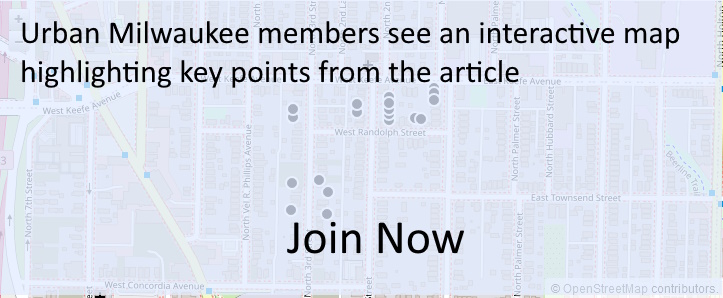
Existing members must be signed in to see the interactive map. Sign in.
If you think stories like this are important, become a member of Urban Milwaukee and help support real, independent journalism. Plus you get some cool added benefits.




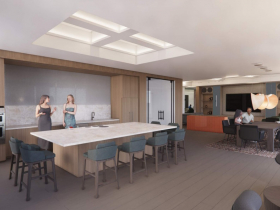



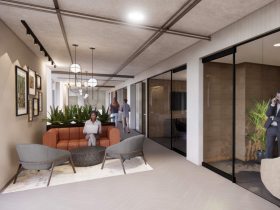
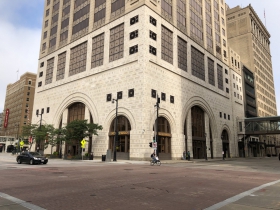
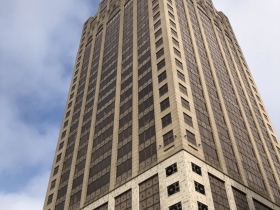
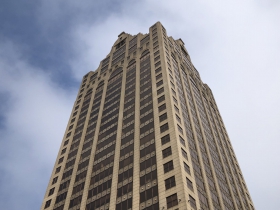




















Good on Alder Coggs for pushing on all these things. Important matters that need to be decided.
Does anyone know why Alderwoman Milele A. Coggs abstains on so many votes, rather than taking a position?